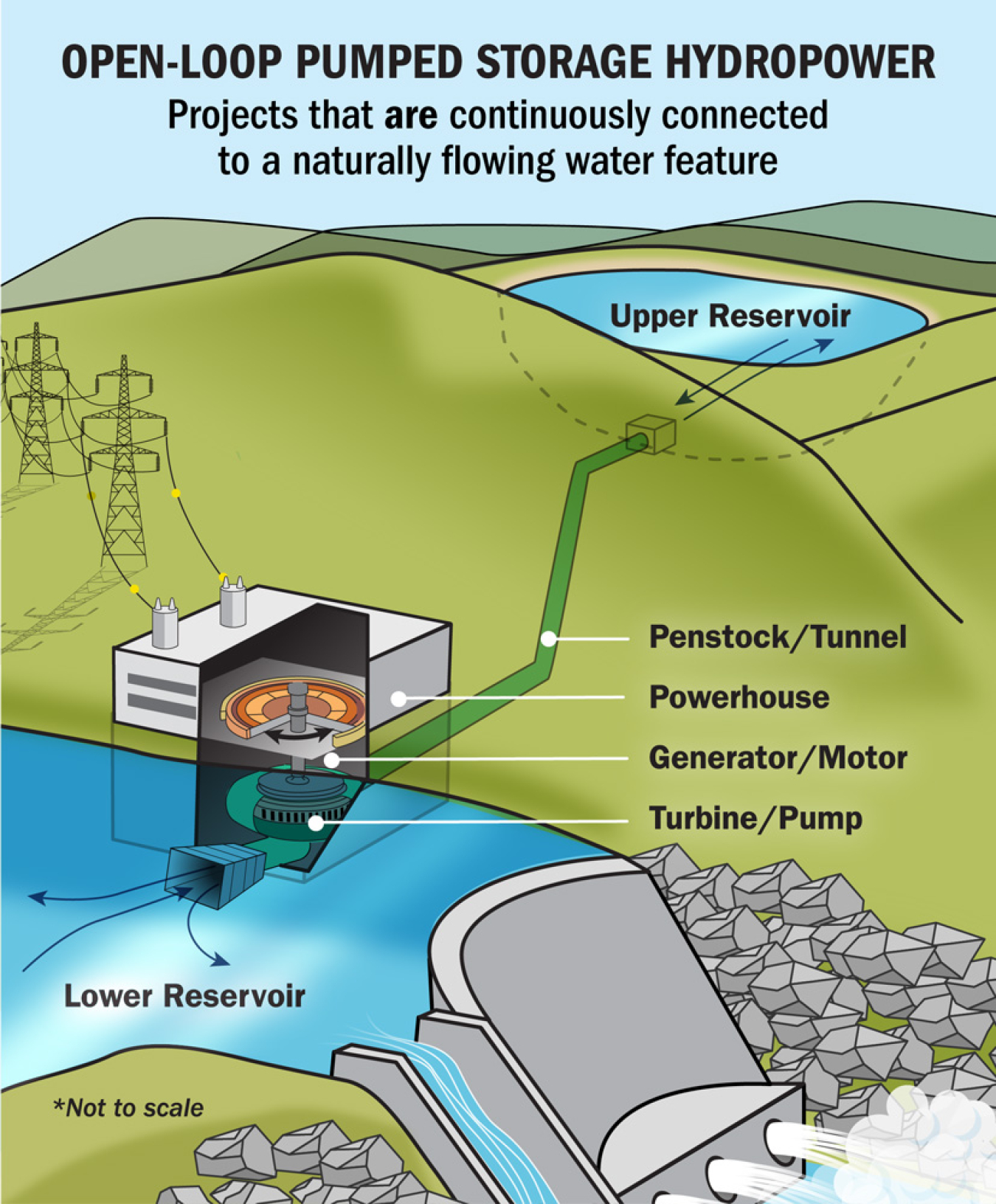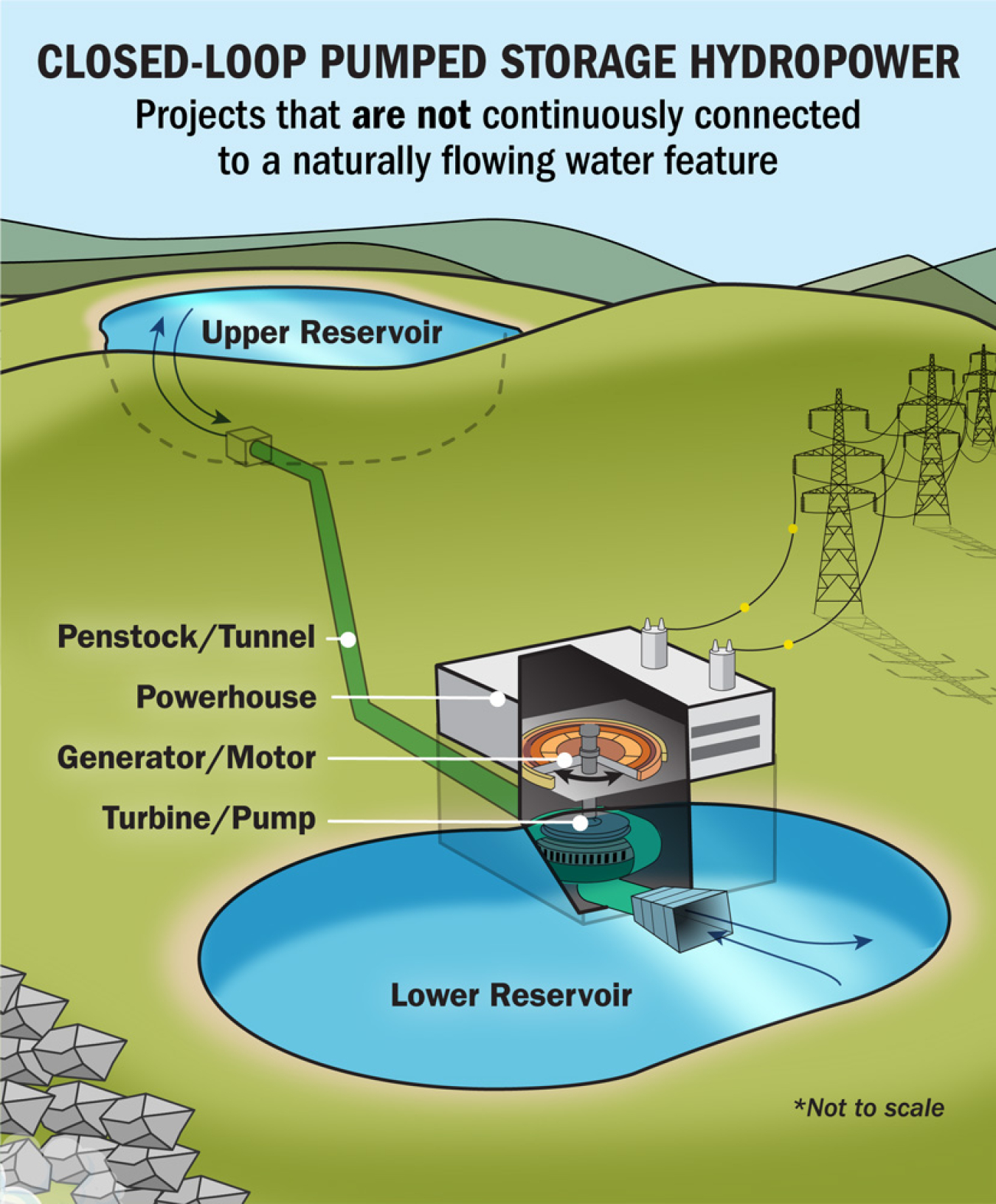What is Pumped Storage Hydropower?
Learn More
Pumped storage hydropower (PSH) is a type of hydroelectric energy storage. It is a configuration of two water reservoirs at different elevations that can generate power as water moves down from one to the other (discharge), passing through a turbine. The system also requires power as it pumps water back into the upper reservoir (recharge). PSH acts similarly to a giant battery, because it can store power and then release it when needed. The Department of Energy's "Pumped Storage Hydropower" video explains how pumped storage works.
The first known use cases of PSH were found in Italy and Switzerland in the 1890s, and PSH was first used in the United States in 1930. Now, PSH facilities can be found all around the world! According to the 2023 edition of the Hydropower Market Report, PSH currently accounts for 96% of all utility-scale energy storage in the United States. America currently has 43 PSH plants and has the potential to add enough new PSH plants to more than double its current PSH capacity.
Open-Loop Versus Closed-Loop Pumped Storage Hydropower
PSH can be characterized as open-loop or closed-loop. Open-loop PSH has an ongoing hydrologic connection to a natural body of water. With closed-loop PSH, reservoirs are not connected to an outside body of water.

Open-loop pumped storage hydropower systems connect a reservoir to a naturally flowing water feature via a tunnel, using a turbine/pump and generator/motor to move water and create electricity.

Closed-loop pumped storage hydropower systems connect two reservoirs without flowing water features via a tunnel, using a turbine/pump and generator/motor to move water and create electricity.
The Water Power Technologies Office (WPTO) invests in innovative PSH technologies and research to understand and determine the value of the potential benefits of existing and prospective advanced PSH facilities. Through the HydroWIRES Initiative, WPTO is currently working on projects designed to evaluate and expand hydropower and PSH’s contribution to grid resilience and reliability.
Hydropower News
-
- Hydropower
- Marine Energy
November 15, 2024
WPTO's Hydropower e-newsletter features news on R&D and applied science to advance sustainable hydropower and pumped-storage technologies.
WPTO brings funding opportunities, events, publications, & activities related to hydropower and marine energy directly to your inbox.

